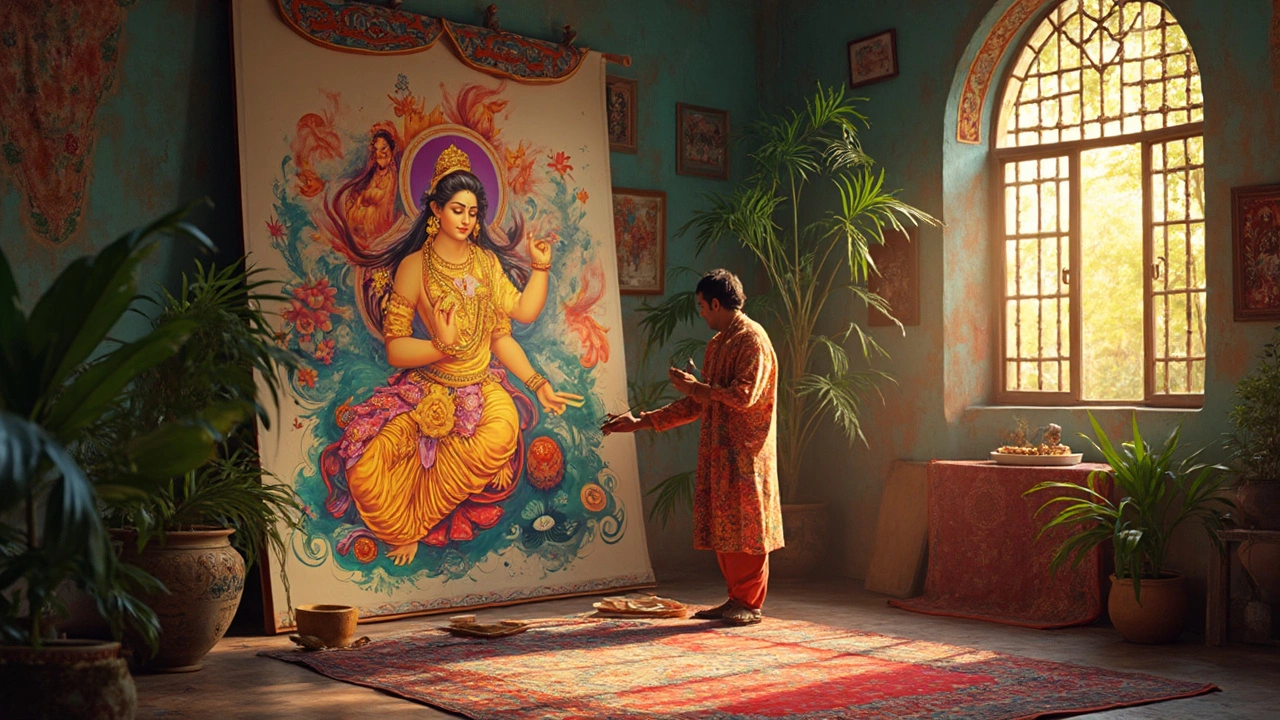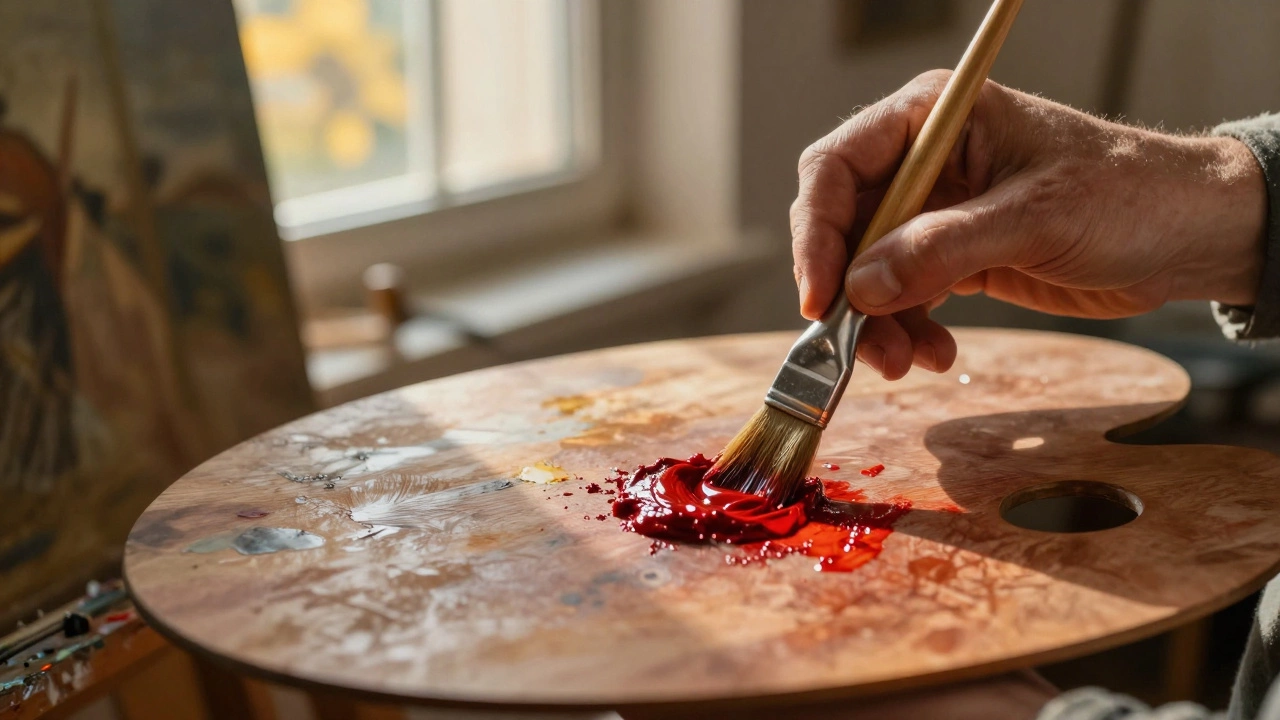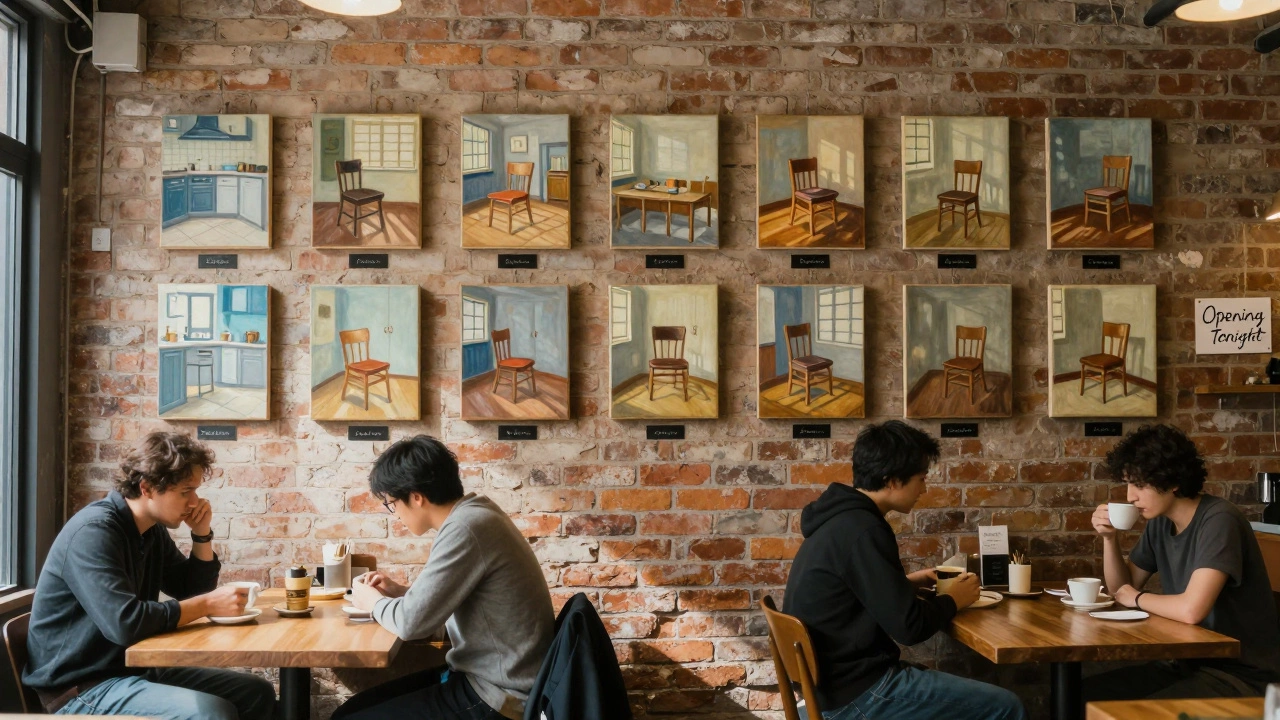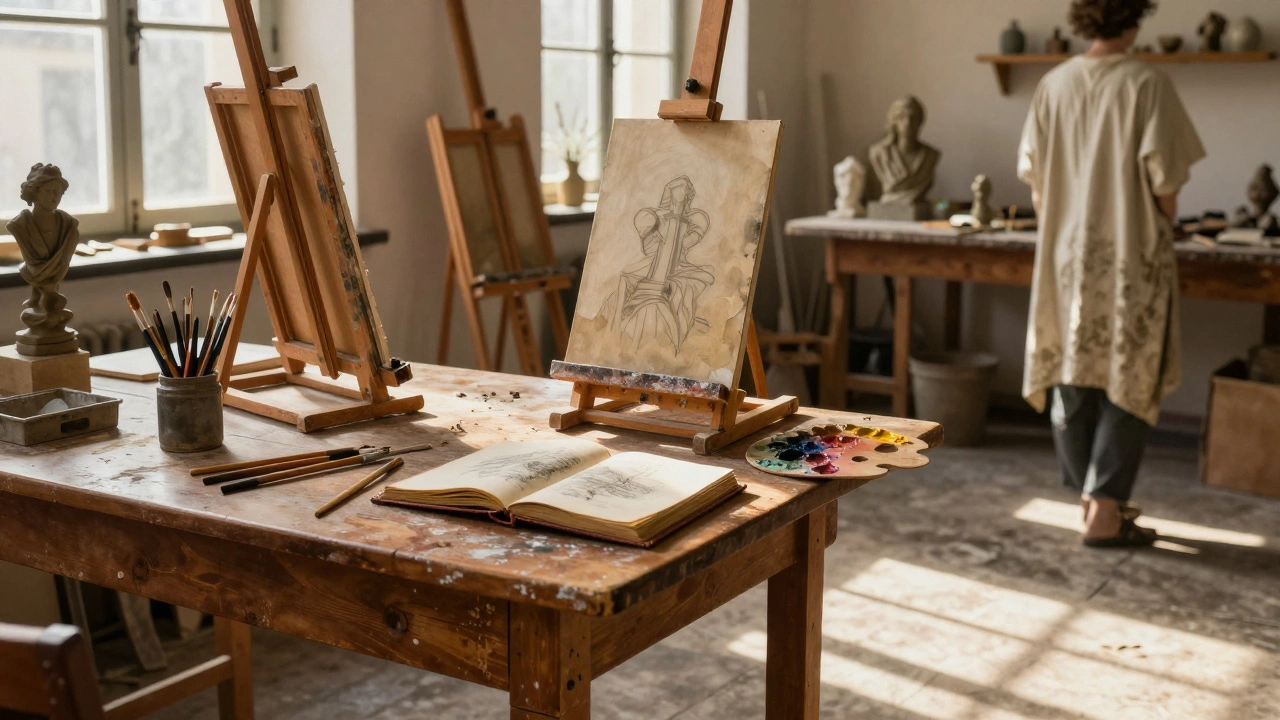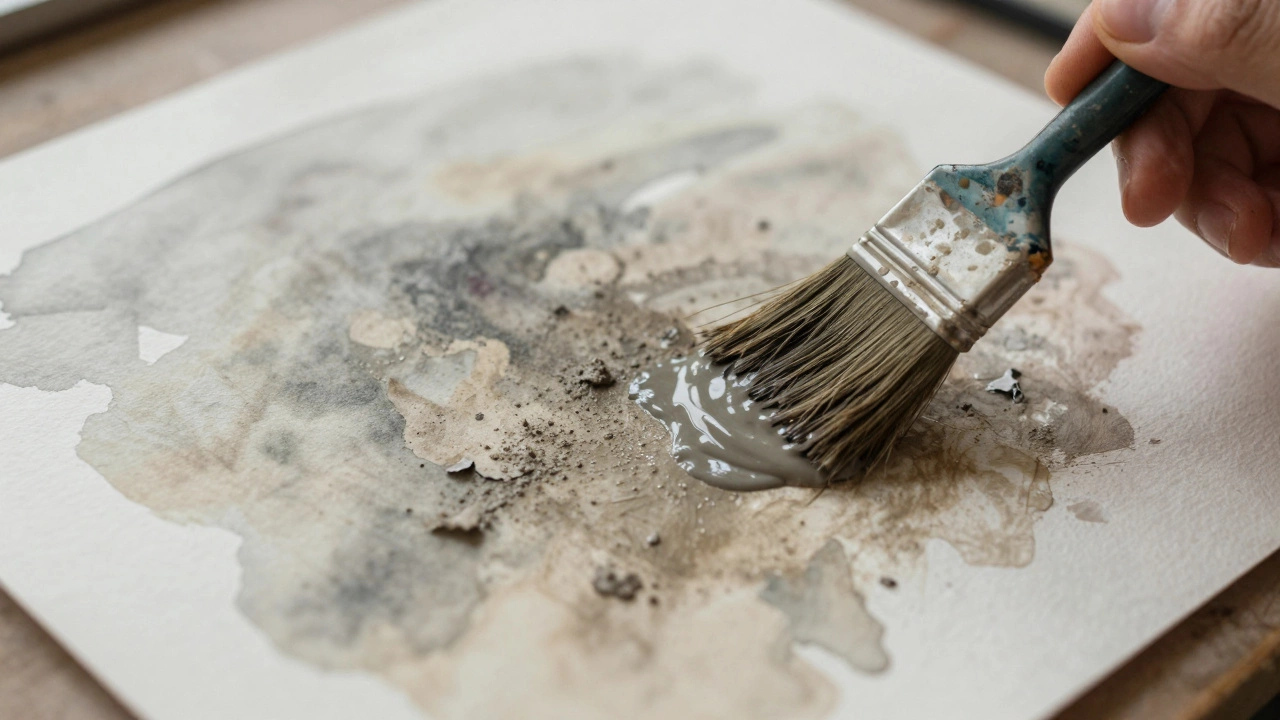Ever walk into a gallery, spot a gorgeous print, and notice a tiny word beneath it: giclée? Not everyone’s heard it pronounced right (it’s "zhee-CLAY," by the way) or knows exactly what it is. There’s something oddly mysterious and even controversial about giclée. Some collectors swear by it; others raise an eyebrow. But what’s behind this fancy French-sounding term? Is it just artsy marketing or is there real quality under the hood? Strap in, because giclée goes way deeper than ink on paper.
Origins and Meaning of Giclée
Let’s set the scene in 1991. The art world was buzzing with excitement about digital inkjet printing—a new way to make vibrant, detailed art prints. Enter Jack Duganne, a printmaker in California, who decided that calling a fine art print “inkjet” sounded, well, too much like something you’d use for spreadsheets at home. Instead, he borrowed the French word "gicler" (meaning "to squirt") and gave the method an elegant spin: “giclée.” The term quickly caught on among artists, galleries, and collectors seeking a snappier, more exclusive-sounding label.
The word stuck, but the definition shifted. Originally, "giclée" referred to any artwork produced using a high-resolution inkjet printer. Now, people expect more—archival-quality paper, pigment-based inks, and sharp detail that can rival the original work. There’s no universal certification, but the best giclée prints meet strict criteria: at least 300 dpi (dots per inch) when printed, pigment inks (not just dye-based), acid-free media, and long-lasting color stability. If those technical specs sound intimidating, think of it this way: a proper giclée aims for museum-level quality. People aren’t just tossing any old JPEG onto glossy stock and calling it a day.
Yet, here’s where it gets interesting: giclée is both a precise process and a marketing term. Some sellers stamp "giclée" on mass-produced posters, while others reserve it for painstaking, limited-edition art. Knowing the backstory helps you separate gallery-worthy pieces from clever sales talk (and nobody wants to get duped by fancy lingo!).
How Giclée Prints Are Made: The Technical Side
You might imagine some sleek, futuristic machine humming in a spotless studio—and you’d be pretty close. Giclée printing usually starts with a super-high-resolution scan of the original artwork. Artists or technicians then tweak the color and contrast so the print mirrors the real thing as closely as possible. This isn’t your weekend office printer. We’re talking about large-format inkjet printers built by brands like Epson, Canon, and HP, capable of spraying millions of microscopic droplets per second. These printers don’t use ordinary inks, either. They use pigment-based inks, which bond more permanently with paper fibers and resist fading for decades (lab tests by Wilhelm Imaging Research show some giclée prints can last 100–200 years under proper conditions).
Paper choice is another big deal. Forget thin, shiny copier paper. Giclée reproductions land on acid-free, museum-grade materials—cotton rag, textured watercolor sheets, even canvas. Each surface reacts differently to ink, absorbing or reflecting color and detail in ways that can change the vibe of the final print. The layering technique means colors pop vibrantly, and shading is smooth. Close up, you’ll see continuous tone—no clunky dots or grain. If you’ve ever held a giclée print in your hands, you’ll notice its richness, weight, and the vivid depth that seems to glow without a hint of shine or gloss (unless the artist chooses a glossy medium, of course).
This careful method offers artists exacting control. Unlike offset lithography (used for posters and high runs), inkjet giclée lets artists make one print—or one hundred—with the same dazzling quality. And every one can be adjusted for size or cropped for effect. If you’re a creator, this means you can test a single copy before going full edition, avoiding costly mistakes.

Why Artists and Collectors Love (or Sometimes Dislike) Giclée
Ask around and you’ll get strong opinions. For artists, giclée opens up nearly limitless possibilities. Say goodbye to traditional printing limitations—now you can reproduce watercolors, oils, or digital collages in all their glory. No minimum quantities, no huge upfront expenses. Need to print larger-to-order or ship internationally? Done. Even famous institutions like The Metropolitan Museum of Art use giclée as part of their reproduction arsenal.
Collectors like giclée for two big reasons: stunning fidelity and longevity. Unlike cheaper prints, giclée can capture subtle brushstrokes, gradients, and fine textures. The right materials keep art looking fresh (and valuable) for generations. Plus, with many artists numbering, signing, and issuing certificates for their giclée runs, you get a sense of ownership and provenance.
But here comes the controversy. Some in the art world bristle at the idea of giclée, especially when it comes to collecting for investment. Since a giclée is a reproduction, it doesn’t have the same one-of-a-kind aura as an original painting or hand-pulled etching. There’s also confusion: just because it’s labeled “giclée” doesn’t automatically mean exceptional quality—it depends on the materials and care involved. When shopping for giclée, it pays to do your homework. Ask the seller: Which printer, paper, and inks did they use? Is the edition limited or open? Are there certificates of authenticity? It’s like shopping vintage—details matter.
Interesting Facts and Tips for Buying Giclée
Here’s a wild one: early in the digital print era, the technology behind giclée was so rare that artists sometimes had to wait months for access to studios with the right equipment. Now, with advances in printing, even small workshops can produce top-tier giclées. Some notable artists have built entire careers sending giclée prints to fans across the globe—no shipping massive canvases, no wrangling with delicate originals. Digital files, stored with care, let art live on even if the original work is lost or damaged (a serious benefit if you’re preserving a legacy).
Keep an eye out for base prices. Because high-quality pigment inks and archival papers don’t come cheap, a genuine giclée is never a bargain-basement deal. If a so-called “giclée” looks suspiciously cheap and uses thin paper or lacks documentation, it probably isn’t the real thing. Want to know the lifespan? Here’s a sneak peek at some numbers:
| Ink Type | Estimated Lifespan (Years) | Fade-Resistance Test Standard |
|---|---|---|
| Pigment-based ink | 100-200 | Wilhelm Imaging Research |
| Dye-based ink | 25-40 | Wilhelm Imaging Research |
If you want to display your print, don’t hang it in direct sun, near radiators, or in high-moisture environments. Even the best print gets sad and faded if mistreated. And framing with UV-protective glass gives your giclée art an extra defense layer for decades of bright color.
- Always look for the phrase 'archival' on both inks and papers.
- Ask for a signed certificate or numbered edition if value matters to you.
- Read up on the artist—prints tied to reputable creators usually hold or increase their worth.
- Trust your senses: a quality giclée feels thick, with textures you can see and (carefully!) touch.
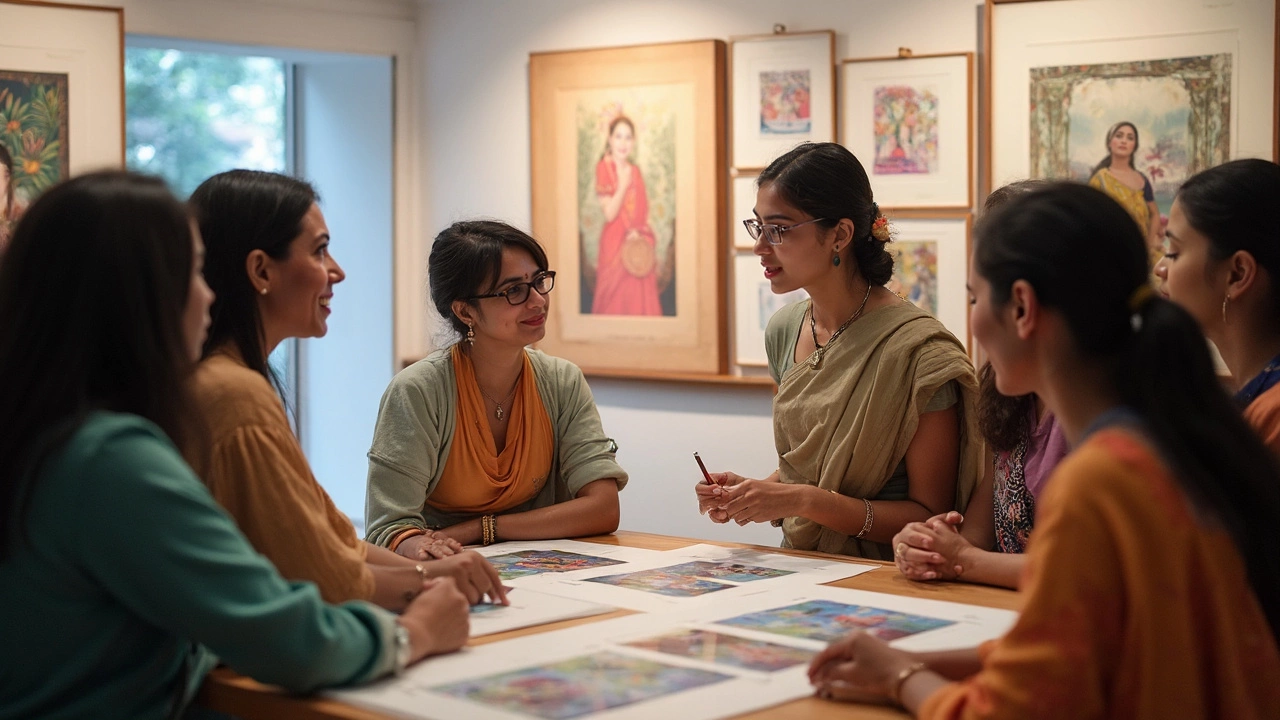
Giclée in the Digital Art World and Future Trends
Giclée has totally crossed over from traditional painting to the world of digital art and photography. You’ll find digital creators who never painted a physical canvas selling limited-edition giclée prints to loyal audiences. It’s a huge shift—now, digital files become tactile, collectible treasures. At high-end art fairs and Etsy alike, it’s the gold standard for anyone who cares about quality printmaking. Even museums sometimes swap out fragile originals for giclée copies in their exhibitions, letting crowds enjoy masterpieces up close without risking damage.
The technology behind giclée isn’t stopping. Printers evolve, with more color cartridges (some have 12 or more!) to capture every subtle hue. Artists experiment with newer substrates like bamboo or eco-friendly hemp for another twist. On top of traditional giclée runs, some artists blend the process with hand embellishments—imagine a painter adding a bit of gold leaf or texture on top of a printed piece. That makes each print unique and more valuable to collectors.
Collectors are increasingly savvy, using digital certificates, blockchain technology, and smart tags to track authenticity and edition size. Transparency matters. Artists are getting better at telling the story behind each giclée, highlighting the mix of craft, technology, and vision that brings each piece to life. If you’re into custom home décor, designers love giclée’s flexibility: need a print that fits your space, color-matched to your scheme? No problem—just talk to the artist about a custom order.
So, what does giclée mean? It isn’t just a buzzword for "something printed." It’s about bridging old-school artistry with cutting-edge tech, offering collectors beautiful, lasting, gallery-worthy pieces—all without breaking the bank for a one-of-a-kind original. Next time you spot the word giclée, you’ll know: you’re looking at the top of the art-printing food chain. Ask questions, look for quality, and enjoy knowing you’re getting something built to last.
